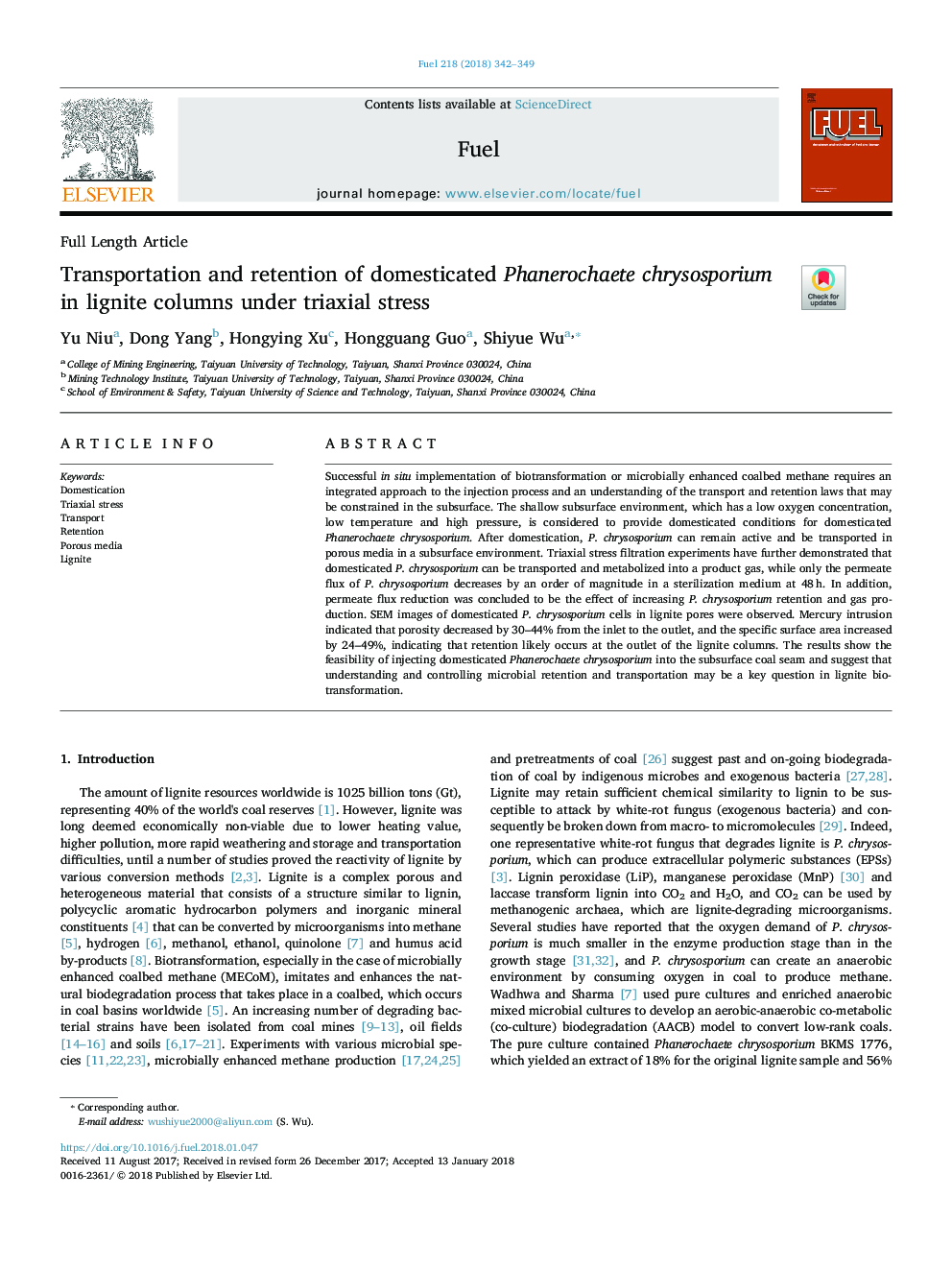| Article ID | Journal | Published Year | Pages | File Type |
|---|---|---|---|---|
| 6631944 | Fuel | 2018 | 8 Pages |
Abstract
Successful in situ implementation of biotransformation or microbially enhanced coalbed methane requires an integrated approach to the injection process and an understanding of the transport and retention laws that may be constrained in the subsurface. The shallow subsurface environment, which has a low oxygen concentration, low temperature and high pressure, is considered to provide domesticated conditions for domesticated Phanerochaete chrysosporium. After domestication, P. chrysosporium can remain active and be transported in porous media in a subsurface environment. Triaxial stress filtration experiments have further demonstrated that domesticated P. chrysosporium can be transported and metabolized into a product gas, while only the permeate flux of P. chrysosporium decreases by an order of magnitude in a sterilization medium at 48â¯h. In addition, permeate flux reduction was concluded to be the effect of increasing P. chrysosporium retention and gas production. SEM images of domesticated P. chrysosporium cells in lignite pores were observed. Mercury intrusion indicated that porosity decreased by 30-44% from the inlet to the outlet, and the specific surface area increased by 24-49%, indicating that retention likely occurs at the outlet of the lignite columns. The results show the feasibility of injecting domesticated Phanerochaete chrysosporium into the subsurface coal seam and suggest that understanding and controlling microbial retention and transportation may be a key question in lignite biotransformation.
Related Topics
Physical Sciences and Engineering
Chemical Engineering
Chemical Engineering (General)
Authors
Yu Niu, Dong Yang, Hongying Xu, Hongguang Guo, Shiyue Wu,
